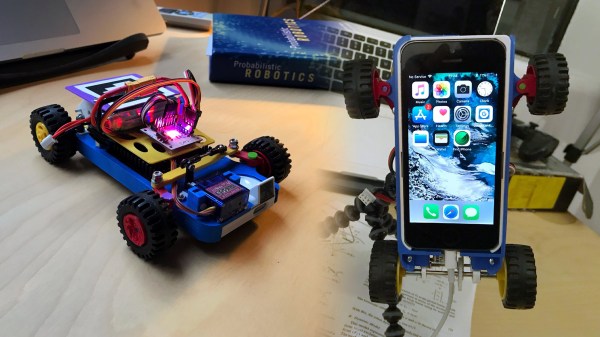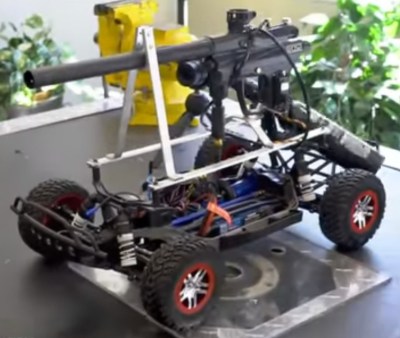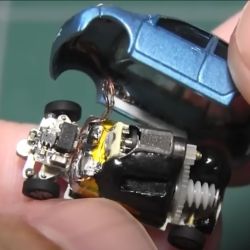
For many people having a miniature version of something like a car is already a miracle in itself, but there’s always the possibility to take matters a bit further, as YouTube channels like [diorama111] demonstrate. In this particular case, they took a 1:150 scale model of a Nissan Micra and installed a microcontroller, battery, remote steering and front, rear and indicator lights. Considering the 24.5 x 11.4 x 10.5 mm (LxWxH) size of the scale model, this is no small feat.
The original plastic bottom and wheels are removed, and replaced with a metal frame, as well as steerable front wheels that have a neodymium magnet attached to follow a metal guidance track that can be underneath the road surface. For the brains an ATtiny1616 MCU in QFN format is used to receive commands from the PIC79603 infrared receiver module and drive the motor attached to the rear axle via a DRV8210 motor controller IC. The remaining MCU pins are mostly used for turning the LEDs on the lights and signals on or off.
In the video the miniscule RC car is driven around a course with traffic lights, which gives a good impression of how this could be used in a large scale model of a city, with a hidden rail system to determine car routes. As for keeping the 30 mAh Li-Po battery charged, there’s a charge port on the bottom, but at these low current rates you could have hidden conductive charging points throughout the route as well, assuming you can fit a small enough charging coil in this little space.
(Thanks to [Keith Olson] for the tip)
Continue reading “Turning A 1:150 Scale Model Car Into A Real Driving Car With Lights”

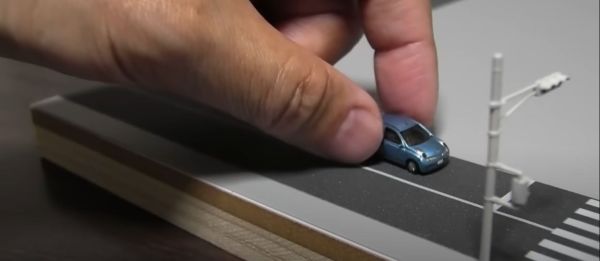

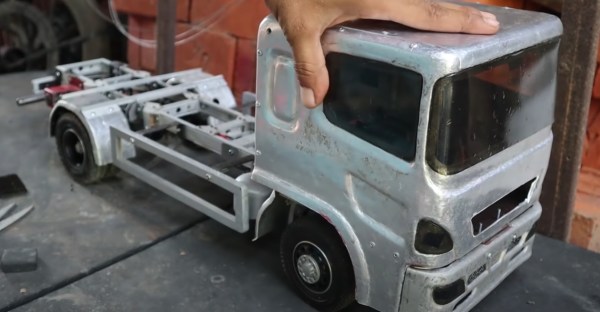
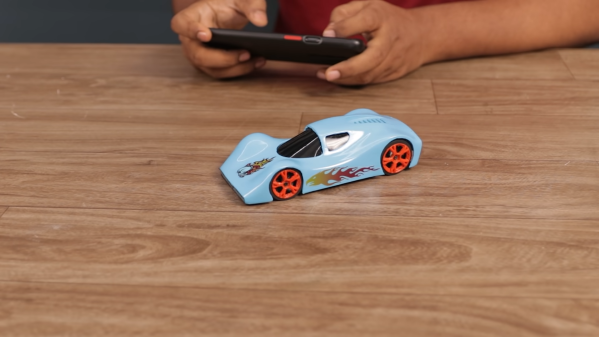
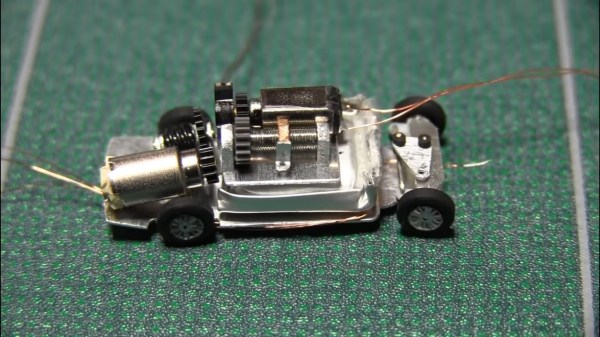
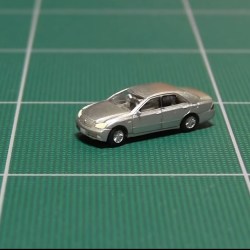 The build starts with a Tomy 1:150 model Toyota Crown / Avalon. However, only the outer shell remain. From giving the wheels rubber tires and fabricating a delicate steering assembly, to adding motors for both locomotion and turning, the mechanical build is on point. But seeing the ATtiny1616 is deadbugged with a DRV8835 motor driver, with the SMD parts hooked up with magnet wire to save the most space possible is equally impressive. A PIC79603 IR module is used to receive the commands to drive the car.
The build starts with a Tomy 1:150 model Toyota Crown / Avalon. However, only the outer shell remain. From giving the wheels rubber tires and fabricating a delicate steering assembly, to adding motors for both locomotion and turning, the mechanical build is on point. But seeing the ATtiny1616 is deadbugged with a DRV8835 motor driver, with the SMD parts hooked up with magnet wire to save the most space possible is equally impressive. A PIC79603 IR module is used to receive the commands to drive the car.